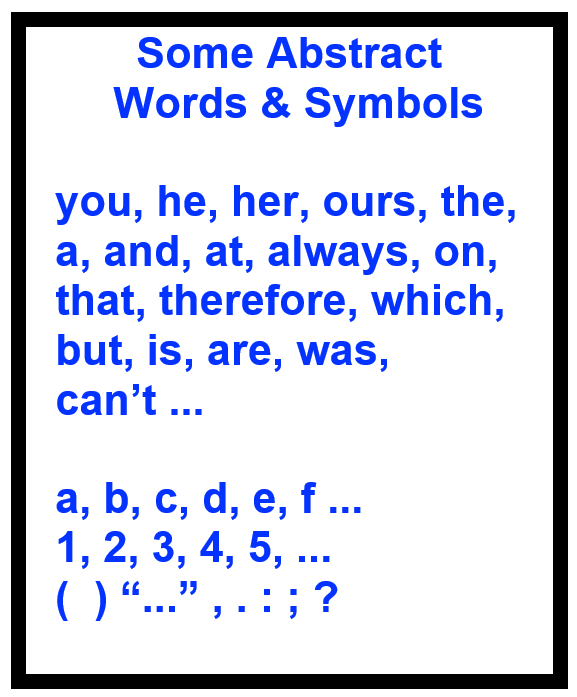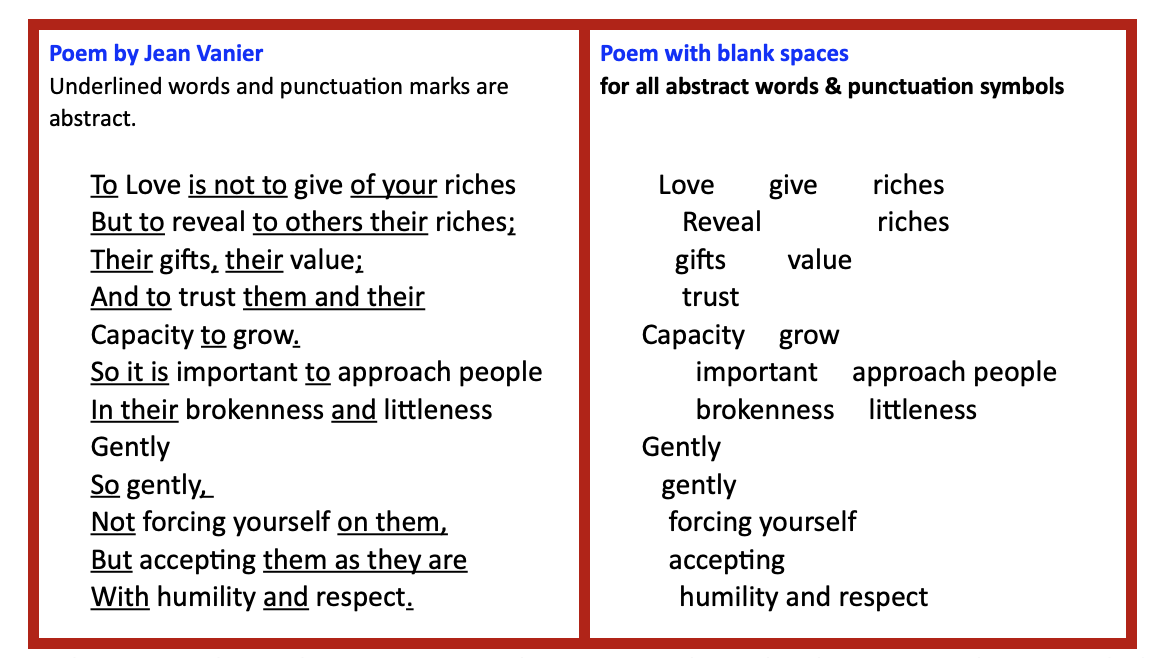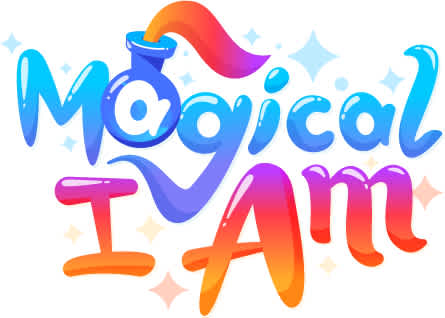What is it about Abstract Words & Symbols That Interrupts Reading Comprehension?

What is an Abstract Word (A Sight Word)?

In English, there are Sight words and abstract symbols, as well as Concrete words and symbols. Those words and symbols that you can experience with your senses (see, hear, feel, touch, taste, smell) are considered concrete words and symbols - for example: tree, whistle, ball, house, lemon. All other words and symbols are abstract - they lack any concrete 3-D, physical association to give them meaning. The chart above shows some Sight words and abstract symbols.
Every child can use abstract and concrete words appropriately when they talk, tell stories, play, ask and answer questions. However, learning written language can be a Pandora’s Box for the child. Over 50% of the words and symbols read in the written texts and books in K-5 are abstract, and often called Sight Words. Any of these Sight words can interrupt and derail the young learner from being able to read fluidly with comprehension.
There is notable confusion among educational experts for learning to read the Most Commonly Read Words – which, in fact, consist of 86 out of the first 100 ‘Most Commonly Read’ words are abstract. Few educators know how to address the problem beyond using rote and drill! Academia distinguishes the group of abstract words by several different names:
Abstract Words
Sight Words
Dolch Words
Outlaw Words
Trigger Words
Fry Words
Interrupter Words
Most Commonly Read Words
Yet, regardless of what label is used for this group of words, teaching them by rote and drill does not ensure mastery of the words. Too many readers do not learn to read at grade level in our educational system.
The Problem
Confusion begins when learning to read and write with tools that are a specific set of abstract symbols - alphabet letters, numbers, words, and punctuation marks!
When a child reads a word incorrectly, hesitates, inserts a word, skips a word or lines, or misses a punctuation stop, the culprit is usually a Sight word or abstract symbol. To learn to recognize and comprehend a word, the young reader needs to “experience” all 3 parts of the word:
What the word LOOKS like
What the word SOUNDS like
What the word MEANS.
Once a child masters simultaneously the look and sound of the letters of a word or a symbol, and one of its definitions, the child will recognize it, fluidly read it and comprehend it.
Since Sight words and abstract symbols lack inherent, concrete meaning, they have no physical representation that can be experienced and give them meaning. Therefore, a 3-D experience of the meaning of the word has to be created for the Sight word or abstract symbol to be recognizable and become comprehensible. Most dictionary definitions for a word contain a multitude of Sight words – this is not a 3-D learning experience. For example, let’s look at a definition of the word “the”: That one which is here, or which has been mentioned. Out of the 11 words and symbols of the definition, only 1 is a concrete word (“mentioned”).
Adding to the confusion produced by dictionary definitions of Sight words is the phonetic information of what the letters of the word sound like. Here is a dictionary definition of the word “confusion”:
Confusion: a noun
Sounds like: kənˈfyo oZHən/
Definition: The state of being bewildered or unclear in one’s mind about something.
Can you “read” (make sense of and sound out) the above phonetic symbols of the word ‘confusion’? Also, notice only 3 of the 14 words and symbols in the definition for ‘confusion’ are concrete words.
Reading and Apparent “Word Blindness”
The curious aspect of learning to read fluidly through Sight words and abstract symbols is that reading errors occur inconsistently. The major influence is the level of confusion the reader is experiencing while reading.
Unfortunately for the 3-D dyslexic learner, of the 100 Most Commonly Used Words and Symbols in the English language 85 are abstract and often cause a reader to misread! Sight words and abstract symbols cannot be pictured or sensed, and yet they make up more than 50% of the words in text read by children in grades K-5!
After a young 3-D dyslexic learner runs into a series of interrupting Sight words and abstract symbols over a couple of sentences, paragraphs or pages, confusion is rampant, and the reader takes a mental health break – the student’s imagination and focus leave the task! Typically, after several months of this type of behavior, the teacher will label the child as a daydreamer, lazy, or unable to stay focused. The teacher believes she cannot help the child because they cannot stay connected to the work they are doing. Due to their poor performance in school, the student may come home from school and tell their mom: “I am stupid!” “I am dumb!” Usually, the mother knows her child is intelligent and her heart aches to hear her child speak these words. The child’s low self-esteem revelation to the parent is one of the clearest indicators of the child being someone who learns differently than most of their peers.
The chart below gives 2 versions of the same poem by Jean Vanier. In the left version of the poem, the non-visual words (Sight words) are underlined in the text. In the second version of the poem on the right, the underlined words have been erased.

Does the version on the right make any sense to you? Are you confused by it?
This is the kind of “word blindness” that can be experienced by the reader who has not mastered reading written Sight words and abstract symbols. �
The Solution to Learning to Read Sight Words and Symbols
The Sky Village – Trail of Spells digital app is a new and unique edutainment game that plays on Apple and Android mobile devices, and therefore is available to the learner to play anywhere, any time. Sky Village – Trail of Spells teaches the 3-D dyslexic learner in their learning style. This edutainment game uses a proven reading methodology and digital 3-D techniques to provide the look, sound and meaning of Sight abstract words and symbols for the 3-D dyslexic learner to experience while having fun playing an adventure game.
Having fun playing a game and having exciting 3-D experiences in the game become powerful teaching tools. Once a 3-D dyslexic learner masters the look and sound of a Sight word or abstract symbol, and one definition of it, seldom do they have to master any other of the definitions of that word. They now can read it and understand it wherever they encounter it in writing.
